If the hustle and bustle of daily life has crept its way into your home, it’s time to consider practical steps for a healing and harmonious transformation. Not sure where to begin? Let us help. In this post, we’ll focus on creating genuine spaces designed for unwinding. Call it a guide on thoughtful choices, and how to blend comfort, connection, and mindfulness to turn any space into one of nurturing and healing.
Let’s get started then, shall we?
Can Soft Furnishings Transform Your Home’s Atmosphere for Optimal Well-being?
Soft furnishings and textiles are the unsung heroes of a harmonious and healing home environment, seamlessly blending comfort and aesthetic appeal. Throw rugs and cushions, often overlooked, play a pivotal role in creating a cosy atmosphere that fosters relaxation. These elements go beyond visual aesthetics, contributing to the tactile experience of a room and providing a sense of warmth and tranquillity. The versatility of soft textiles allows for easy personalisation, making it simple to refresh the look of a space and align it with individual preferences. Whether it’s the comforting embrace of a plush rug or the visual interest added through a variety of textures, soft furnishings create a multi-sensory experience that enhances the overall well-being of a living space.
Moreover, the intentional use of soft textiles extends beyond the visual and tactile, influencing the acoustics of a space. These furnishings absorb sound, reducing echoes and creating a peaceful environment, particularly beneficial in open-plan areas. Natural materials in textiles also bring a touch of nature indoors, contributing to a holistic connection with the environment. In summary, the thoughtful inclusion of soft furnishings and textiles is not just about design; it’s about crafting a sanctuary that promotes relaxation, reduces stress, and fosters an overall sense of well-being within the home.
-
 ferm LIVING Calm Cushion, Rectangular, Olive/Off-White
ferm LIVING Calm Cushion, Rectangular, Olive/Off-White -
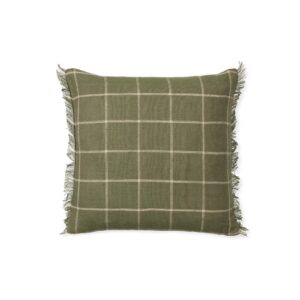 ferm LIVING Calm Cushion, Olive/Off-White
ferm LIVING Calm Cushion, Olive/Off-White -
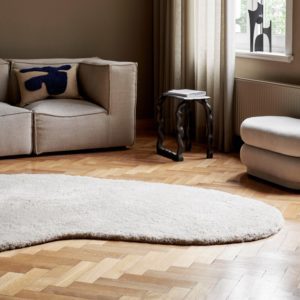 ferm Living Forma Wool Rug, Off-White
ferm Living Forma Wool Rug, Off-White -
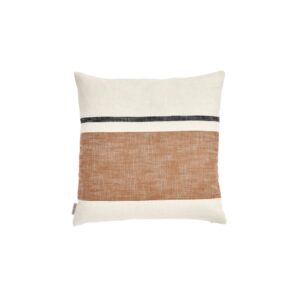 OYOY Sofuto Cushion Cover, Square, Off-White
OYOY Sofuto Cushion Cover, Square, Off-White -
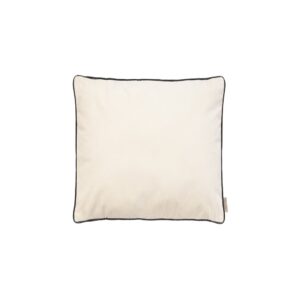 BLOMUS Velvet Cushion Cover, 40x40cm, Moonbeam
BLOMUS Velvet Cushion Cover, 40x40cm, Moonbeam -
 KLIPPAN Gotland Multi Throw Blanket, Pastel
KLIPPAN Gotland Multi Throw Blanket, Pastel -
 KLIPPAN Vinga Throw Blanket, White
KLIPPAN Vinga Throw Blanket, White
Is Strategic Furniture Planning the Key to a Connected and Welcoming Home?
Arguably, yes. Designing a home with a focus on fostering connection and gathering involves thoughtful consideration of furniture choices and spatial arrangements. Well-placed and comfortable furniture, such as inviting seating arrangements and multipurpose pieces, encourages face-to-face interactions and establishes a welcoming environment. Open layouts contribute to the flow of movement and interaction, allowing for easy navigation and creating spaces that draw people together. The use of flexible furniture and the incorporation of natural gathering points, like dining areas or communal spaces, facilitate adaptability for different group sizes and activities. Additionally, furniture can play a role in supporting shared activities, such as movie nights or game sessions, by integrating technology-friendly features.
Creating inclusive designs, considering diverse needs, and fostering a sense of community through well-defined zones contribute to the overall success of spaces for gathering. Outdoor areas, furnished for socialising, provide additional opportunities for connection. A cohesive design theme ties spaces together, creating a unified and harmonious environment. Lighting considerations, both natural and artificial, enhance the atmosphere, making spaces more inviting and conducive to socialising. Ultimately, furniture becomes a powerful tool in shaping the social dynamics of a home, creating comfortable, versatile, and aesthetically pleasing spaces that promote connection, community, and well-being.
-
 BLOOMINGVILLE Paula Mug, Stoneware, Brown
BLOOMINGVILLE Paula Mug, Stoneware, Brown -
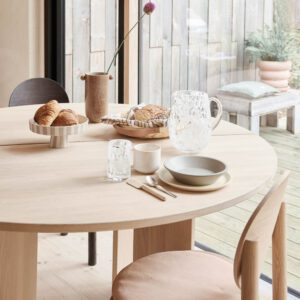 PRE-ORDER | OYOY Kotai Round Dining Table, Nature
PRE-ORDER | OYOY Kotai Round Dining Table, Nature -
 PRE-ORDER | ferm LIVING Rico Dining Chair Swivel, Bouclé, Off-White
PRE-ORDER | ferm LIVING Rico Dining Chair Swivel, Bouclé, Off-White -
 BLOOMINGVILLE Reanna Stoneware Mug, Brown
BLOOMINGVILLE Reanna Stoneware Mug, Brown -
 NEW WORKS Kizu Portable Table Lamp, Breccia Pernice
NEW WORKS Kizu Portable Table Lamp, Breccia Pernice -
 PRINTWORKS Classic Board Games Chess, Green
PRINTWORKS Classic Board Games Chess, Green -
 ferm LIVING Still Teapot
ferm LIVING Still Teapot
How Do Mindful Practices Impact Your Well-Being At Home?
Mindful rituals and intentional acts of wellness are integral components of cultivating a healing and harmonious home environment. Incorporating elements such as scented candles, aromatherapy, soaps, lotions, and other intentional practices contributes to a positive and mindful atmosphere. These practices promote present-moment awareness, stress reduction, and relaxation within the home. Mindful living extends to creating personal retreats, fostering a connection with the home environment, and prioritising well-being through sustainable and eco-friendly choices. These intentional acts become daily rituals that not only enhance the sensory experience but also contribute to an overall sense of sanctuary, promoting a positive and well-balanced lifestyle within the home.
In essence, by integrating mindful rituals and intentional acts of wellness, individuals can create a space that not only looks aesthetically pleasing but also supports their mental, emotional, and physical well-being. The home becomes a sanctuary where intentional practices become a part of daily life, fostering an environment of positivity, relaxation, and holistic wellness.
As we wrap up this exploration into crafting a healing and harmonious home, remember that transforming your space is an ongoing journey. The practical steps we’ve discussed, from soft furnishings to mindful choices, are just the beginning. Continuously reassess your surroundings, and don’t hesitate to make adjustments that align with your evolving needs. Your home is a dynamic canvas, and every thoughtful decision contributes to the overall tapestry of well-being. Trust the process, relish in the comfort, connection, and mindfulness you’ve intentionally woven into your space, and let your home truly become a sanctuary for healing.
Until next time, may your surroundings continue to nurture and inspire the peace you deserve.





